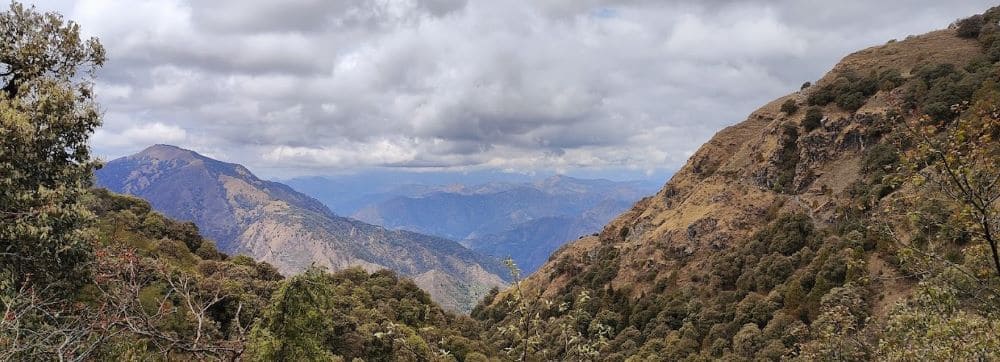

Benog Wildlife Sanctuary, Mussoorie
About Benog Wildlife Sanctuary, Mussoorie
Benog Wildlife Sanctuary is a beautiful and serene wildlife sanctuary located in the picturesque hill town of Mussoorie, in the northern Indian state of Uttarakhand. Spread over an area of 339 hectares, the sanctuary is a popular tourist destination for nature lovers and wildlife enthusiasts. The sanctuary is home to a wide range of flora and fauna and offers a peaceful retreat from the hustle and bustle of city life.
History and Location:
The Benog Wildlife Sanctuary was established in the year 1993 and is named after the highest peak in the area, Benog Hill, which rises to a height of 2,250 meters above sea level. The sanctuary is located in the western Himalayas, about 11 km from Mussoorie town. It is easily accessible by road and is about an hour's drive from Dehradun, the capital city of Uttarakhand.
The Benog Wildlife Sanctuary
One of the most fascinating aspects of Benog Tibba is the Benog Wildlife Sanctuary that surrounds it. The sanctuary covers an area of approximately 339 acres and is home to a rich biodiversity of plant and animal species. As you trek to the peak, you may encounter various species of birds, including the endangered mountain quail. Leopards, panthers, and Himalayan goats are among the mammals that inhabit the sanctuary.
The Natural Beauty of Benog Tibba
Benog Tibba is known for its lush oak and rhododendron forests, which transform into a riot of colors during the spring bloom. The mountain is home to a variety of flora and fauna, making it an ideal destination for nature lovers and birdwatchers. The cool and crisp mountain air, coupled with the stunning panoramic views, makes Benog Tibba a true wonder of nature.
Flora and Fauna:
The sanctuary is known for its diverse flora and fauna, with more than 500 species of plants and trees and over 200 species of birds. Some of the commonly found trees in the sanctuary include oak, rhododendron, and deodar. The sanctuary is also home to several rare and endangered species of plants, including the Himalayan blue poppy and the Himalayan bellflower.
The sanctuary is home to several species of animals, including the Himalayan black bear, leopard, barking deer, and langur. The sanctuary is also home to several species of birds, including the Himalayan monal, the state bird of Uttarakhand, and the koklass pheasant.
Activities:
The Benog Wildlife Sanctuary offers a range of activities for tourists, including nature walks, trekking, and bird-watching. There are several well-marked trails that lead through the sanctuary, offering visitors an opportunity to explore the flora and fauna of the area. Visitors can also enjoy a picnic in the serene surroundings of the sanctuary.
One of the most popular activities in the sanctuary is bird watching. The sanctuary is home to several rare and endangered species of birds, including the Himalayan monal, the koklass pheasant, and the red-billed blue magpie. Visitors can hire a guide to take them on a bird-watching tour and learn more about the different species of birds that inhabit the sanctuary.
Visitors can also trek to Benog Hill, the highest peak in the sanctuary, for a panoramic view of the surrounding hills and valleys. The trek is relatively easy and can be completed in a few hours.
Conservation:
The Benog Wildlife Sanctuary is an important conservation area and is managed by the Uttarakhand Forest Department. The sanctuary is a part of the larger Rajaji National Park, which is a protected area for wildlife and biodiversity conservation. The sanctuary is home to several rare and endangered species of plants and animals, and efforts are being made to preserve their habitat and ensure their survival.
Trekking in the Sanctuary
One of the best ways to explore the Benog Wildlife Sanctuary is through trekking. Several well-marked trails crisscross the sanctuary, taking you through the lush forests and meadows. The ascent to Benog Tibba, a nearby peak that offers panoramic views, is one of the most popular trekking routes. The trail gradually ascends from the forested region to open meadows, providing breathtaking vistas of the surrounding valleys and snow-capped peaks of the Garhwal Himalayas.
Visiting Benog Wildlife Sanctuary
The sanctuary is accessible throughout the year, but it's best explored during the warmer months from March to June and then from September to November. The weather is pleasant, and the flora and fauna are at their vibrant best during these seasons. Ensure that you acquire the necessary permits from the local forest department before entering the sanctuary.
Conclusion
Benog Wildlife Sanctuary, with its remarkable biodiversity, tranquil ambiance, and splendid landscapes, remains a hidden treasure in the heart of the Himalayas. Visiting this sanctuary offers an opportunity to reconnect with nature, explore untouched wilderness, and witness the wonders of the region's flora and fauna. As you embark on a journey through this enchanting sanctuary, you'll understand why it's considered one of nature's best-kept secrets in the beautiful state of Uttarakhand.
Firstrek Business Today, 2:38
Really Awesome services, they porovide to their customers. You must try this place once.
Reply